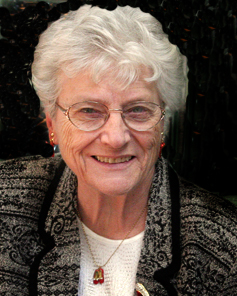
The following article is part of the Diamond Club Member group that began in the January 7, 1943, issue of the Rock County Star Herald. Members of this group consist of persons of age 75 and older.
This article appeared in the March 25, 1943, edition of The Rock County Star Herald.
When Edward Byrne, Luverne, came west from Iowa to settle, South Dakota was still a part of Dakota Territory. A lot of people, who had heard of the rich prairie land open to homesteaders in the territory, moved out of Iowa in immigrant trains at that time, and joining the throng was Mr. Byrne and his brother. He was then only 17 years old.
Mr. Byrne was born March 18, 1865, in a log house in Alamakee county, in the northeast corner of Iowa. His parents, Lawrence and Bridget Hart Byrne, were natives of Ireland who came first to Quebec, Canada, and then to Iowa to live.
They settled not far from the Mississippi river, and at that time, the land in that area was covered with timber. Unusually fine trees were cleared by the settlers so they could begin raising crops, Mr. Byrne states. Now comparatively rare, the walnut tree, butter nut trees, three kinds of oak and basswood trees would be cut down just to get them out of the road.
Mr. Byrne was a boy of 10 when he began earning his own money. He received 25 cents a day for planting corn by hand. The fields were marked out in squares, and wherever lines crossed, the person or persons doing the planting had to drop two or three kernels of corn. After some practice, Mr. Byrne reports, it was no trick at all to pick out the exact number of seeds out of the bag and drop them exactly where they were supposed to be. Men, and often times the women folks, would follow after the person doing the planting and would cover up the seed with hoes.
In 1881, Mr. Byrne’s older brother Frank went to Dakota Territory, and the following year, Mr. Byrne and his brother Will moved there, going to the vicinity of Marion.
In 1884, they decided to go to Faulk county where there was a lot of prairie sod to be broken for settlers who had homesteaded there. Mr. Byrne, using four head of oxen on an 18 inch sulky plow, and his brother, using three horses on a 16 inch sulky plow, together broke five acres a day. They received $4 per acre for the work—a good salary, Mr. Byrne says, but every dollar was well earned.
So new was Faulk county, when they went there, Mr. Byrne said, that section lines in some places hadn’t even been surveyed. He was present to see the surveyors running the first section lines in Arcade township, Faulk county.
Although he was not out in the storm, he remembers the blizzard of 1888 well. His brother had driven to Faulkton with a team and sled and was about two or three miles out of town on his way home when the storm struck. He decided to turn around and go back, but his team would not face the wind. He managed to keep his bearings by driving parallel to the railroad grade. He drove 10 miles through the blinding snow and finally arrived in the town of Miranda where he remained until the weather conditions improved.
But Mr. Byrne never entered politics himself, with the exception of the time he served as treasurer of Hillsdale township in Faulk county. His brother Frank, however, served as governor of South Dakota for two terms, 1913 to 1917.
Mr. Byrne was married at Waukon, Ia. Sept. 30, 1908. He and his wife farmed in South Dakota until 1919, and then moved to Luverne which has since been their home. They decided to move here after they had visited in Luverne several times and had grown to like the town. After coming here, Mr. Byrne operated a dray and bus line for two years, and retired after he suffered a leg injury.
Mr. and Mrs. Byrne have two children, Mrs. Nick Forrette of Adrian, and Sgt. Robert Byrne, who is attending a radio school in Montreal, Canada. They have two grandchildren.
Of a family of 10, Mr. Byrne, and two other brothers, Joe Byrne of Clairmont, Fla., and Tom Byrne of Clairmont, Fla., and Tom Byrne of Seattle, Wash. are still living.
He is a member of St. Catherine’s church of Luverne.
Donations to the Rock County Historical Society can be sent to the Rock County Historical Society, 312 E. Main Street, Luverne, MN 56156.
Mann welcomes correspondence sent to mannmade@iw.net.



